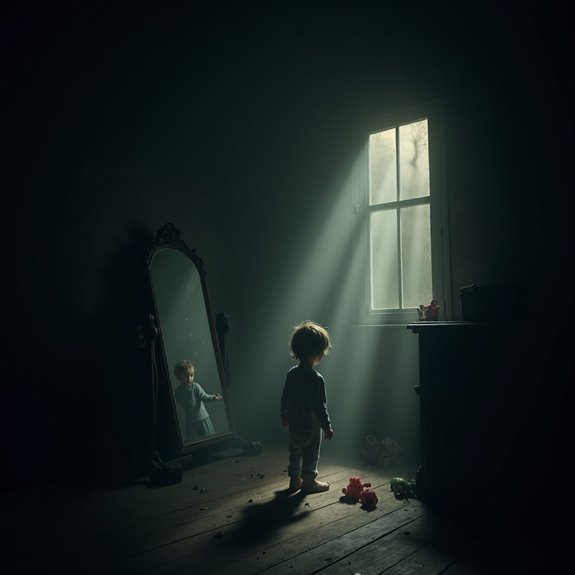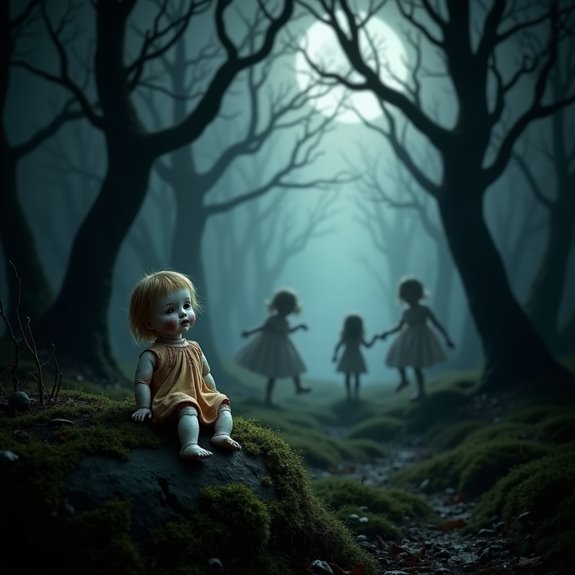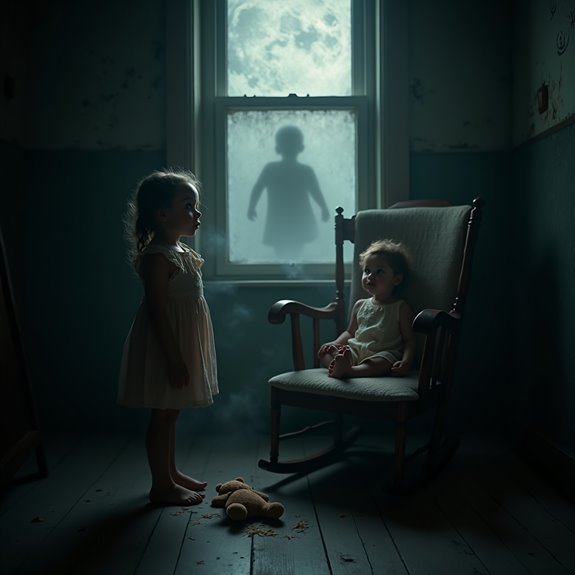Why Do Ghost Stories Often Involve Children?
Ghost stories frequently center around children, tapping into the symbolic innocence and vulnerability they represent. This juxtaposition heightens tension, as young characters often encounter dark forces with a mix of curiosity and fear. Their interactions with malevolent spirits evoke deeper themes of protection and the loss of innocence. Yet, the reasons behind this intriguing trend go beyond mere narrative devices—there’s societal anxiety and moral lessons at play, prompting further exploration into this compelling phenomenon.
Introduction

When it comes to ghost stories involving children, what draws people to these tales? Archetypally, children embody innocence and vulnerability, making their encounters with the supernatural particularly poignant. These stories tap into deeper fears, illustrating the contrast between the purity of childhood and the lurking darkness of the unknown. Audiences often find themselves captivated by the eerie juxtaposition as young protagonists confront malevolent spirits or haunted environments. Additionally, children’s natural curiosity magnifies the suspense; their fearless exploration invites intrigue and terror. It’s not just the fright that fascinates readers, but the broader implications of protection and the loss of innocence. Ultimately, ghost stories featuring children challenge societal
Childhood Fears in Folklore

While many childhood fears stem from the imagination, folklore often amplifies these anxieties, transforming them into cautionary tales. Legends and stories featuring monsters under the bed, dark forests, or vengeful spirits serve to personify these fears, giving children a tangible form of what lurks in their minds. Figures like the Boogeyman or the Wendigo represent the unknown and teach lessons about safety and morality. These narratives highlight issues like disobedience or wandering too far from home. By confronting these fears through storytelling, children learn to navigate their trepidations. As they share these tales, they bond, creating a space where fear becomes a shared experience, consequently shaping their understanding of the world around them and the complexities of their emotions.
Notable Cases or Sightings

Throughout history, numerous notable cases and sightings of ghostly encounters involving children have captivated the imagination. One famous incident occurred in the 1950s, when siblings in England reported seeing the ghost of a boy in an old graveyard. Locals were stunned to discover the apparition matched the description of a child who’d gone missing decades earlier.
Similarly, a young girl in a Louisiana home claimed that her imaginary friend was actually the spirit of a little girl who once lived there. Family members later uncovered evidence confirming the identity of the ghostly companion. These compelling accounts highlight the deep emotional connections children often form with the supernatural, making their experiences particularly haunting and memorable in the domain of ghost stories.
Common Theories or Explanations
Although the existence of child-related ghost stories often sparks intrigue, several common theories aim to explain these phenomena. One theory suggests children possess a heightened sensitivity to the supernatural, allowing them to perceive spirits due to their imaginative minds. Another theory posits that children’s fears often manifest as ghostly encounters, serving as a metaphor for their struggles with anxiety and change. Additionally, some believe that the innocence of children attracts ghosts, who resonate with their purity. It’s also argued that adults may interpret innocent behaviors, like imaginary friends or night terrors, as encounters with the paranormal. These theories highlight how societal perspectives shape understandings of ghost stories, revealing underlying emotional and psychological factors tied to childhood experiences.
Frequently Asked Questions
Are Children’s Ghost Stories Different From Those Told by Adults?
Children’s ghost stories often differ from adults’ tales, featuring innocence and curiosity. They focus on wonder, exploring fears playfully, while adults typically emphasize darker themes, reflecting life’s complexities, experiences, and deeper psychological elements within their narratives.
How Do Cultural Backgrounds Influence Children’s Ghost Stories?
Cultural backgrounds shape children’s ghost stories by infusing unique beliefs, fears, and moral lessons. Different traditions introduce distinctive characters and themes, making each child’s narrative reflect their heritage, experiences, and community values in enchanting ways.
What Age Group Is Most Likely to Experience Ghostly Encounters?
Research shows children ages six to twelve often report ghostly encounters. Their vivid imaginations and openness to the supernatural can lead them to perceive things adults might dismiss, making this age group particularly susceptible to such experiences.
Do Children Create Imaginary Friends Linked to Ghost Stories?
Children often create imaginary friends tied to ghost stories, reflecting their vivid imaginations. These playful constructs help them navigate fears and explore the unknown, giving them a sense of comfort while confronting supernatural themes in their stories.
How Do Ghost Stories Impact Children’s Development and Imagination?
Ghost stories spark children’s imaginations, encouraging creativity and emotional expression. They navigate fear, build resilience, and develop critical thinking by distinguishing reality from fiction. Engaging with these tales helps shape their understanding of various emotions and experiences.
Related Posts

Do Haunted Roads Have More Accidents?

Ghosts in the Desert: Mirages or Spirits?
